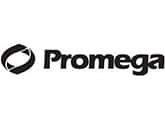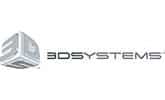Choosing A Mixer To Fit Your Needs
What is required to choose a lab mixer or stirrer?
What types and power requirements should be considered?
How to specify a lab mixer or stirrer?
Choosing the right lab mixer
There is a wide variety of lab mixers on the market. Lab mixers are often referred to as stirrers, blenders, R+D agitators, homogenizers, and benchtop mixer. We will try and break down the many options that may be considered. Depending on the specific features you need for your application, and the economics involved this should help you decide which lab stirrers may be a fit for you.
Classifications
- Electric – explosion proof (XP) for mixing with solvents, flammables, alcohol, etc
- Air operated, or pneumatic operated mixer (also good for XP environments)
- Hand held mixer (air, electric, or battery operated) “drill” style mixer
The next level of “specialty” mixers can be considered:
- High shear lab mixers, or high speed benchtop dispersers
- Homogenizers – very high speed and high shear mixers
- High shear ultrasonic mixers
- High viscosity pale mixers
- High viscosity anchor style or planetary mixers, high torque mixers
- Drum mixers, tote mixers (getting more into larger volume agitators)
- Sealed mixers (for flanged and pressurized tanks)
- Biopharm sanitary mixers/agitators – for aseptic and ultraclean mixers
- Disposable mixing technology (USP VI bag style mixers)
When dealing with your mixing vendor, it will be very helpful to explain what your mixing application is, and what materials you will be mixing. Depending on the volumes you will blend, and the products being mixed they will be able to help you choose a mixer that would apply.
How to specify a mixer – what information you will need to supply:
- Mixer drive style (how you will power it, typically electric or air operated)
- Mixer shaft and impeller (materials of construction and impeller style)
- Clamp mechanism for mixer to stand, or mixer to tank
- Mixer stand, or mixer vessel type
- Mixer vessel, beaker, drum dimensions – min and max volume you will run
- Do you want a variable speed mixer/disperser for flexibility in processing
- What is the mixing process and mixing results desired
List of ingredients, and the mixture rheology including:
- viscosity (min and max, or describe if changes thru mixing process)
- specific gravity / density
- solids %
- ingredient order of addition
- any unusual behavior or reaction
- temperature
- pressure/vacuum
- is mixture shear sensitive
Electric lab mixer/stirrer
110volt 1phase or 220volt 1phase plug in mixer drives. Many mixing impeller styles and sizes are available
Hand held plug in style electric mixer, can also be battery operated. Mixer shown is a high speed high shear homogenizer.
Air operated lab stirrer
Mixer drive operated via compressed air
Drum Mixer / Tote Mixer
Mixer designed for 55gal drums and totes
Biopharm mixer / sanitary blender. All stainless mixer designed for aseptic mixing and sealed tanks – typical for FDA and cGMP mixing applications. Sanitary electric mixer or stainless air motors are available. Wetted parts are typically 316Lss and would be polished < 20Ra and electropolished, and the agitator would include a GMP documentation package with proper certs.
Air Motors
Known for their rugged construction and reliability, Air Motors and air powered Gearmotors are available in both lubricated and oilless models. An air motor is something to consider for explosion proof applications, or for flexibility in powering a mixer. There are also stainless sanitary air motors which are nicely suited for biopharm mixing applications. Some benefits of air motors on mixing equipment:
- Non-electrical operation reduces the possibility of explosion from igniting flammable gases
- Undamaged by overloads
- Ideal in hazardous and hostile environments
- Rugged and simple to install
- Variable speed capabilities allow flexibility and versatility, by using an air control valve you can easily adjust the mixer speed
- Cool-running operation means air motors can be used in ambient temperatures of up to 250 F (120 C)
There are some negatives with air mixer motors compared to electric mixer motors. The benefits of electric are that they are quiet, do not have excessive air exhaust, and they do have very accurate speed control, and feedback loops to a VFD.




























